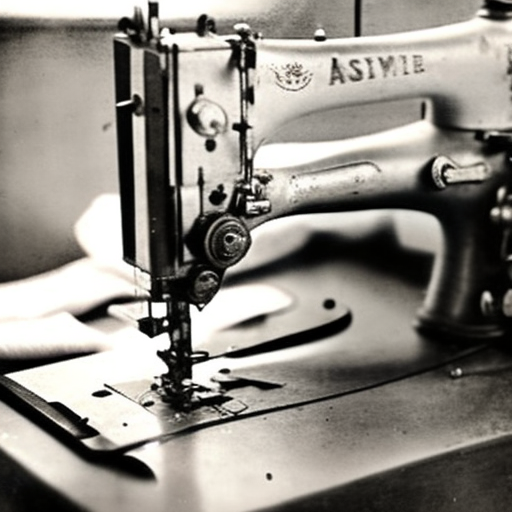Was the Sewing Machine Invented During the Industrial Revolution?
The sewing/” title=”Stitching Stories: A Beginner's Guide to Sewing”>sewing machine is indeed one of the most iconic inventions in the history of industrial revolution. Although the exact date and inventor of the sewing machine are subjects of some debate, it is generally accepted that it was invented during the 19th century, right in the midst of the industrial revolution.
The Industrial Revolution, which began in the late 18th century, transformed the way goods were produced. Traditional manual labor and small-scale production methods gradually gave way to large-scale industrialization, powered by new inventions and machinery that increased productivity. The sewing machine was one such revolutionary invention that played a crucial role in transforming the textile industry, allowing for faster and more efficient production of clothing and textiles.

Sewing machine during the Industrial Revolution
The exact origins of the sewing machine are still a matter of some dispute. While various inventors have made contributions, it is generally recognized that the first functional sewing machine was patented by Elias Howe in 1846. However, several other inventors, like Walter Hunt and John Greenough, had earlier prototypes that laid the foundation for Howe’s design.
During the Industrial Revolution, the sewing machine played a vital role in revolutionizing garment production. Prior to its invention, sewing was a labor-intensive task performed entirely by hand. The introduction of the sewing machine allowed for greater precision and speed, providing a significant boost to the textile industry.
The creation of the sewing machine sparked an industrial revolution within the garment industry itself. It led to the rise of mechanized garment factories and increased the volume and accessibility of ready-made clothing. This, in turn, had a massive impact on society, changing the way people dressed, increasing access to affordable clothing, and creating new job opportunities in the textile industry.
While the invention of the sewing machine did not directly drive the Industrial Revolution, it undeniably had a profound impact on its progress and outcomes. By increasing the efficiency and productivity of textile manufacturing, the sewing machine enabled mass production and marked a shift towards the modern industrial era.
In conclusion, the invention of the sewing machine took place during the Industrial Revolution of the 19th century. This groundbreaking invention revolutionized the textile industry and played a significant role in the larger industrialization process. The sewing machine’s impact can still be felt today, with its legacy evident in the clothes we wear and the way garments are manufactured.





Great question!
#TheSewingMachineInvention opened up a world of creativity and innovation during the Industrial Revolution, creating opportunities for citizens to expand their skills with fabrics and apparel and revolutionizing the beauty and fashion industry as we know it today.
What an interesting topic!
#ItChangedEverything! The invention of the sewing machine skyrocketed textile manufacturing and offered so many possibilities for entrepreneurs and hobbyists alike. It created a surge of economic growth in the 19th century that has forever impacted the way we make and wear clothes.
Fascinating post!
#TheSewingMachine changed the way people create and manufacture clothing, as well as the way people think about style and design. By introducing new technologies that allowed fabrics to be joined together much faster than before, the sewing machine made clothing more accessible and cost effective across the conditions of the Industrial Revolution.